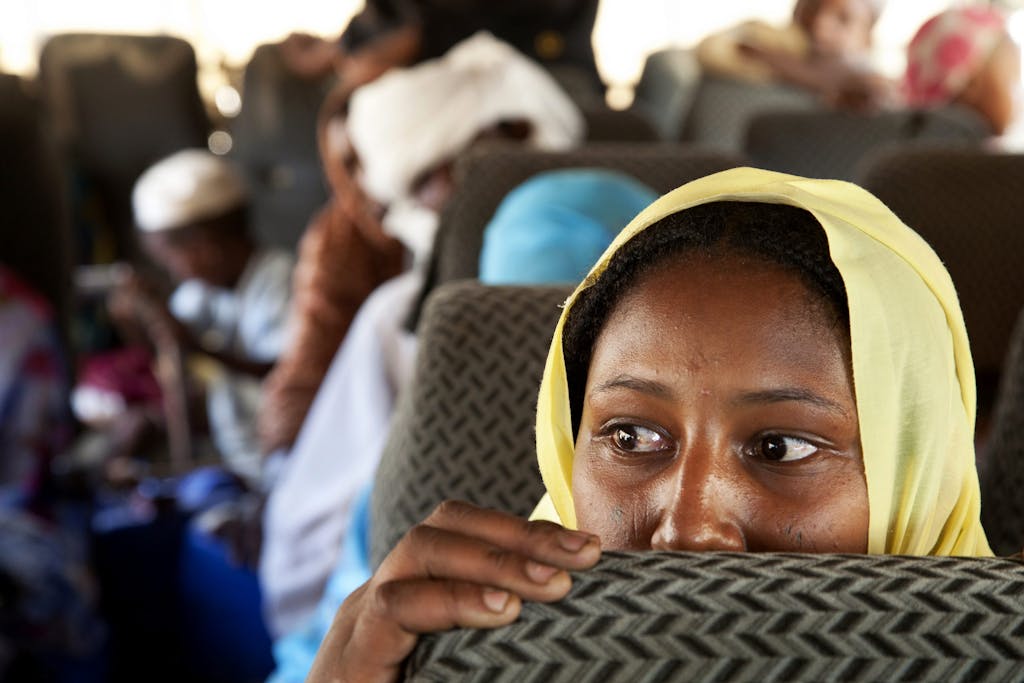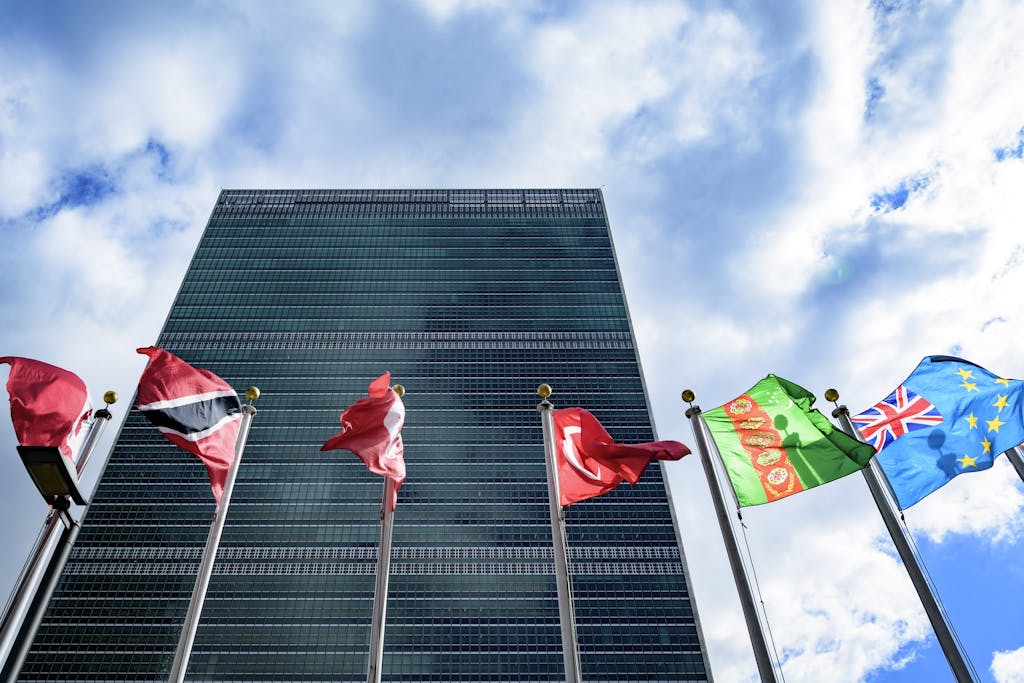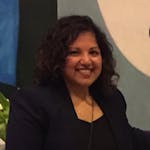2020 was officially designated as the start of the Decade of Action for the Sustainable Development Goals (SDGs): a decade when the implementation and delivery of the goals and global development would be accelerated and awareness of the SDGs would truly catch on, when the world we want in 2030 would be within reach. Enter COVID-19. Across the globe, governments and other stakeholders have been forced to reset their development priorities and the global community has been facing the deepest crisis in a century, the depths of which are yet to be fully comprehended. It was against this backdrop that the global community got together — virtually, this time — at the annual High-level Political Forum (HLPF) to assess how far we have come toward meeting the SDGs. Here are four main themes that stood out from the two weeks of deliberations.
SDGs as the pathway to Build Back Better from COVID-19
I am not here today to tell you that everything will be OK. [. . .] The COVID-19 crisis is having devastating impacts because of our past and present failures. Because we have yet to take the SDGs seriously. Because we have put up with inequalities within and between countries that have left billions of people just one crisis away from poverty and financial ruin.
UN Secretary-General António Guterres at the opening of HLPF
The Secretary-General’s sobering words served as a wake-up call to the world. The SDGs are our common road map for global development, a global public good for all to use. And they are our compass out of the health, socioeconomic and inequality crises that the world is facing. An ominous tone for the HLPF deliberations was set by the findings of the annual SDG progress report and the new report on the State of Food Security and Nutrition, which made clear we were not on the right path even before COVID-19, which has halted or reversed much of the progress. The pandemic has laid bare global and systemic inequalities and is hitting the most vulnerable people the hardest.
The Voluntary National Reviews (VNRs) — the national implementation and progress plans for the SDGs — presented by 47 countries highlighted the challenges presented by COVID-19 and areas where SDG progress is threatened. Reallocation of resources is especially necessary in developing countries, creating new barriers and stressors on national and international systems. Financing and access to financial resources continue to be a concern. In many VNRs a switch from long-term planning to short-term medical and socioeconomic survival was evident.
But both the Secretary-General and the stakeholders also told a more encouraging version of this narrative, which offers an opportunity to restore hope and to Build Back Better and right many of the mistakes of the past by massively investing in a sustainable and just future where no one is left behind. The challenge is historic. But so, too, is the global opportunity to guide the world to a better future — with the SDGs as the north star.
Leaving no one behind: How to secure progress for all
Today 10,000 people will die because of the cost of health care. This is the cost of extreme inequality.
Winnie Byanyima
Executive Director of UNAIDS

The world is not on track to meet its promise to leave no one behind. Winnie Byanyima’s remarks around global inequality and the human costs of these inequalities, exacerbated by the pandemic, was a major theme during HLPF.
Gender-based violence has spiked, and global movements for social, racial, and environmental justice have intensified — all highlighting the need for immediate and long-term action. Digital access — more important than ever in the virtual environment necessitated by the virus — has left large proportions of the most vulnerable people out of the debate. This digital divide has deepened over the years, disproportionately affecting vulnerable and rural communities and developing countries and, again because of the COVID-19 crisis, causing backslides in progress on the SDGs specifically around education, access to health care, and decent work.
The eventual global recovery from COVID-19 presents a huge opportunity to shift from emergency response to long-term sustainable approaches that go beyond building back to achieve transformational change. HLPF participants specifically cited as priorities global access to the internet, technology transfer, and allowing developing countries to leapfrog into the digital age.
A Decade of Action kicked off — Partnerships and solutions for the SDGs
Let us make the HLPF a springboard for greater solidarity and cooperation. The world needs a committed multilateral effort to control the pandemic and resume SDG progress.
Mona Juul
Economic and Social Council President and Permanent Representative of Norway

A special event at HLPF revisited the list of SDG Acceleration Actions, introduced at the September 2019 SDGs Summit as tangible commitments to drive implementation of the SDGs. These innovative projects — supported by partners in governments, the UN System, the private sector, academia, and civil society — now number over 180. Newly announced actions include a commitment by the BBC and its global media partners to increase representation of women on screen; establishment of an office in Bogotá, Colombia, backed by UN agencies, philanthropy, and the private sector to recognize, reduce, and redistribute care work; and Peru’s launch of a national campaign to reduce food insecurity, aided by a network of private sector and civil society stakeholders. We’re also seeing an increase in private sector-driven initiatives, including around SDG benchmarking and disclosure, as well as efforts to drive and implement the SDGs at the local and regional levels.
These actions exemplify how global development and the success of the SDG framework depend on people and their visions and ideas. Through the presentations of VNRs at the HLPF, these ideas and solutions can be brought forward, replicated, and scaled, and new partnerships can be forged. A clear message from HLPF was the need to further strengthen the multistakeholder collaboration around delivering the SDGs. The SDGs were never intended to be implemented solely by governments. The better future we imagine is possible only if it is built on the foundation of partnerships among governments, the UN System, private businesses, civil society, and on-the-ground advocates and organizations. We need all voices heard and all hands on deck.
The future of multilateralism and UN75
. . . We need again a revitalized coalition of states, of the policy willing, of constructive powers, deploying our political, diplomatic, financial resources to make the system as efficient as it can be, given the challenges that we have.
Kevin Rudd
Chair of the International Peace Institute and former Prime Minister of Australia
Charter Day, the day of the founding of the United Nations 75 years ago, was commemorated only a few weeks ago also against a difficult global backdrop. The UN Secretary-General has been very frank about the current challenges, the inadequacies of the UN System, and the need for a revitalized, networked model of multilateralism that would allow for a UN that is closer to people, more efficient, more inclusive, more in tune with the times and that remains our guardian of global solidarity and protector of the most vulnerable. No minor task, but one that only the UN can provide along with the much-needed coordination of global efforts to pave the way into a post-COVID-19 world. The UN and the Secretary-General have started the internal work around UN reform and UN75 on how to secure and maintain a post-pandemic UN System that can deliver solutions to humankind’s most pressing issues — climate change, peace and security, human rights, and a sustainable, just, and equitable future for all.
These were all central themes throughout the two weeks of HLPF with discussions around UN75 serving as a critical bridge between Charter Day and the coming commemoration for world leaders at the UN High-level Week in September. A few elements stand out from discussions: We need a renewed movement of active political support for the UN; we need all stakeholders, from governments to business to civil society and youth, deeply engaged around the table; we need a new definition of what constitutes “We the Peoples”; we need to build on the energy and drive from global youth movements; and we need a stronger focus on finding solutions, building partnerships and making positive changes on the ground. And we need a coordinated global effort around the massive inequalities that the pandemic has laid bare to secure the protection of the most vulnerable. A lot is at stake, for all of us, and the current discussions will define the way forward for the UN and global community.







